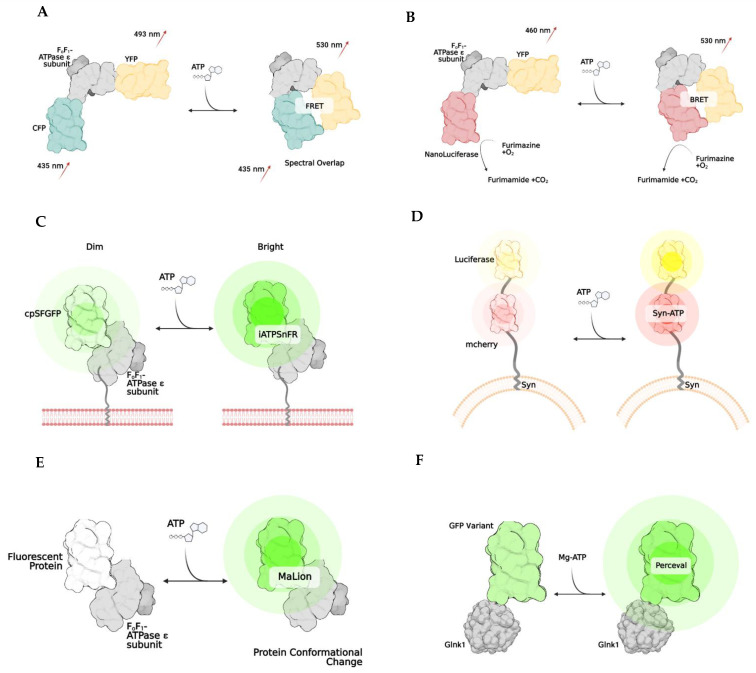Figure 2.
Examples of genetically encoded biosensors. Förster resonance energy transfer, or FRET, (A) works by changing emission spectra after the binding of a substance (A). The result is due to the two fluorophores being brought closer together (<10 nm). Bioluminescent resonance energy transfer, BRET, works similarly to FRET, except NanoLuciferase becomes active once the substrate of interest is bound, resulting in a change of emission. (B) iATPSnFR is a unique biosensor, in which the ATPase subunit has a membrane-bound region, which allows it to be anchored to a cell’s surface. (C) Syn-ATP was designed to target synaptic nerve endings, as the synaptophysin protein anchors the biosensor to a synaptic vesicle membrane. Once ATP is bound, the mCherry and Luciferase enzymes provide a fluorescent/luminescent ratio for analysis. (D) MaLions are intensiometric biosensors, fluorescing brighter as more ATP is bound. These are unique as multiple biosenors have been designed in this family to target specific cellular organelles, making the ATP levels visible across multiple compartments. (E) Lastly, perceval is a ratiometic indicator that indicates its ATP level based on the ratio of ADP to ATP (F).

